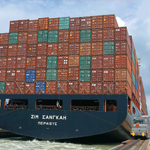First, it was airlines. Then, it was other companies in a wide range of sectors that adopted a low-cost formula for their businesses. This approach involves finding the best price for the company and the customer while emphasizing a strict policy of cost containment.
Many firms in logistics and transportation have made a low-cost model central to their operations. Two tools appear to be fundamental: Innovation and common sense, according to experts who participated in a recent roundtable discussion in Barcelona, Spain.
The concept of a low-cost formula owes its success to airlines that have made air travel accessible to all social strata. EasyJet and Ryanair, for example, revolutionized the market by offering cutthroat low prices while enforcing draconian, company-wide cost control policies, helping them to attract customers and profits. Many policies in the low-cost model, such as paying an additional charge for baggage, have been so successful that Spainair, Iberia and other traditional airlines couldn’t help but adopt them as well. The result? They’ve launched their own initiatives aimed at lowering costs, becoming more competitive in terms of pricing along the way.
Little by little, the low-cost model has become popular beyond airlines. From hotels to real estate, companies are using it to attract customers who are, more than ever, looking for a strong relationship between quality and price.
Getting to Work
For its part, the transportation and logistics sector is looking for ways to deploy the low-cost model without harming service levels. “Nowadays, every company must be competitive all around the world,” noted Luís E. Doménech, vice-president of the executive committee of ICIL Foundation, a Spanish organization providing research, development, marketing and software for the logistics sector. “Not only does this approach involve lowering costs, but also maintaining the same levels of quality while keeping a long-term perspective. A low-cost approach is not short term. It involves a continuous effort to achieve organizational efficiencies, while considering all products or services in terms of what they cost.”
During the roundtable, which was hosted by ICIL Foundation, Pere Roca, director-general of Districenter, a warehousing and distribution firm, and president of ICIL, said, “Low cost is not just about reducing costs but about changing management to gain efficiencies. It involves adjusting a product to the needs of each customer and definitively lowering costs, but it also contributes value to the company." He cited low-cost models of shipping merchandise as a way to differentiate between the various kinds of services that a transportation company provides.
On the one hand, he said, “Doesn’t everything that a company transports have maximum urgency?” Roca noted that transportation providers must differentiate between their rates for shipments that must be delivered rapidly and those shipments where saving money has the highest priority, and their customers are willing to wait longer for delivery. “You have to offer the customer a premium service for the most urgent deliveries, but also another, cheaper one [with a slower shipping time]. Quality means delivering [the shipment] when you promise to do so; not necessarily delivering it the next morning,” he added.
Success Stories
According to José Segura, a consultant and former head of logistics for Sony in Barcelona, innovation and common sense define the strategy that his working group established for low-cost policies at Sony. “We saved 30% on our transportation costs — which involved moving three million televisions through Europe — by eliminating pallets,” said Segura.
Pallets transport cargo in a way that it is easier to manipulate and require special wrapping to protect the cargo, and forklift trucks for moving them around. “We convinced two transportation suppliers to form a temporary union and work with trailers that have a larger volume. We stopped using grips for the cargo in the trailers and, as a result, you could fit one more row of televisions in each trailer,” said Segura. The project led to a significant reduction in Sony’s operating costs throughout Europe. “It was a significant change based simply on using common sense.”
Nevertheless, Segura noted that setting up a low-cost, common sense initiative first requires exploratory work and analysis, involving everyone who is part of the transportation process. “Asking customers and suppliers questions, paying attention to operations, and spending time watching the loading dock are always ways to get excellent results,” he said.
Jaume Segrià, director of operations for Disalfarm, a Spanish logistics firm for the pharmaceutical sector, agreed that collaboration is a good way to cut costs. Disalfarm was set up in 2000 by pharma firms Bayer, Boehringer Ingelheim and Novartis to focus on warehousing and distributing specialty pharmaceuticals in Spain.
“We sell nothing to foreign markets, and we survive exclusively by [a continuous search for] efficiency and innovation,” noted Segrià. “Today, you need low-cost strategies more than ever, but not just at any price. You need both lower costs and higher quality. Our low-cost culture involves critiquing all operational processes, and we devote one meeting a week to doing that.”
For Disalfarm, like Sony, lowering costs is essential across its entire supply chain. “Every month, we spend half an hour with workers, and that has led to eliminating 40% of the mistakes in our preparing of shipments, simply because we’ve stopped counting boxes and are weighing them instead,” one company executive said during the discussion.
Another example of how to optimize resources in a low-cost environment is to economically combine various modes of transportation. For example, Juan Ramón Rodríguez, director of manufacturing and logistics at SEAT, a Spanish auto maker, explained how the company saves money by using a revolutionary approach when transporting vehicles 30 kilometers from its plant in Martorell to the port of Barcelona. “The essence of this low-cost approach is the efficiency of the processes. You can achieve excellence by offering a low-cost service or product while fulfilling your customer’s precise expectations. Neither more nor less than the service and the price you’ve agreed on,” Rodriguez noted. SEAT has reduced costs using a combination of trains and highways.
For his part, José María Leal, who manages Nutrexpa, a food manufacturing company, stressed that low-cost processes do not harm the quality of the services or products. In the food industry, “we are looking for services in a highly competitive environment and we are always trying to achieve the maximum profitability for the company,” he said.
For Leal, the benefits of any low-cost formula go beyond the company’s transportation department to all participants in the supply chain. “Currently … the trend is to optimize and pay for just what you need. The low-cost approach can lead to optimizing operations, and it must be applied in every area, not just to services such as transportation. It also affects inventory and manufacturing,” he said. Everything related to manufacturing of a product has consequences for its transportation costs. “You have to take into account the logistical design of the merchandise,” he noted.
“An excellent service is one that fulfills exactly what the customer’s goals are. That is low-cost service,” Segrià said.



